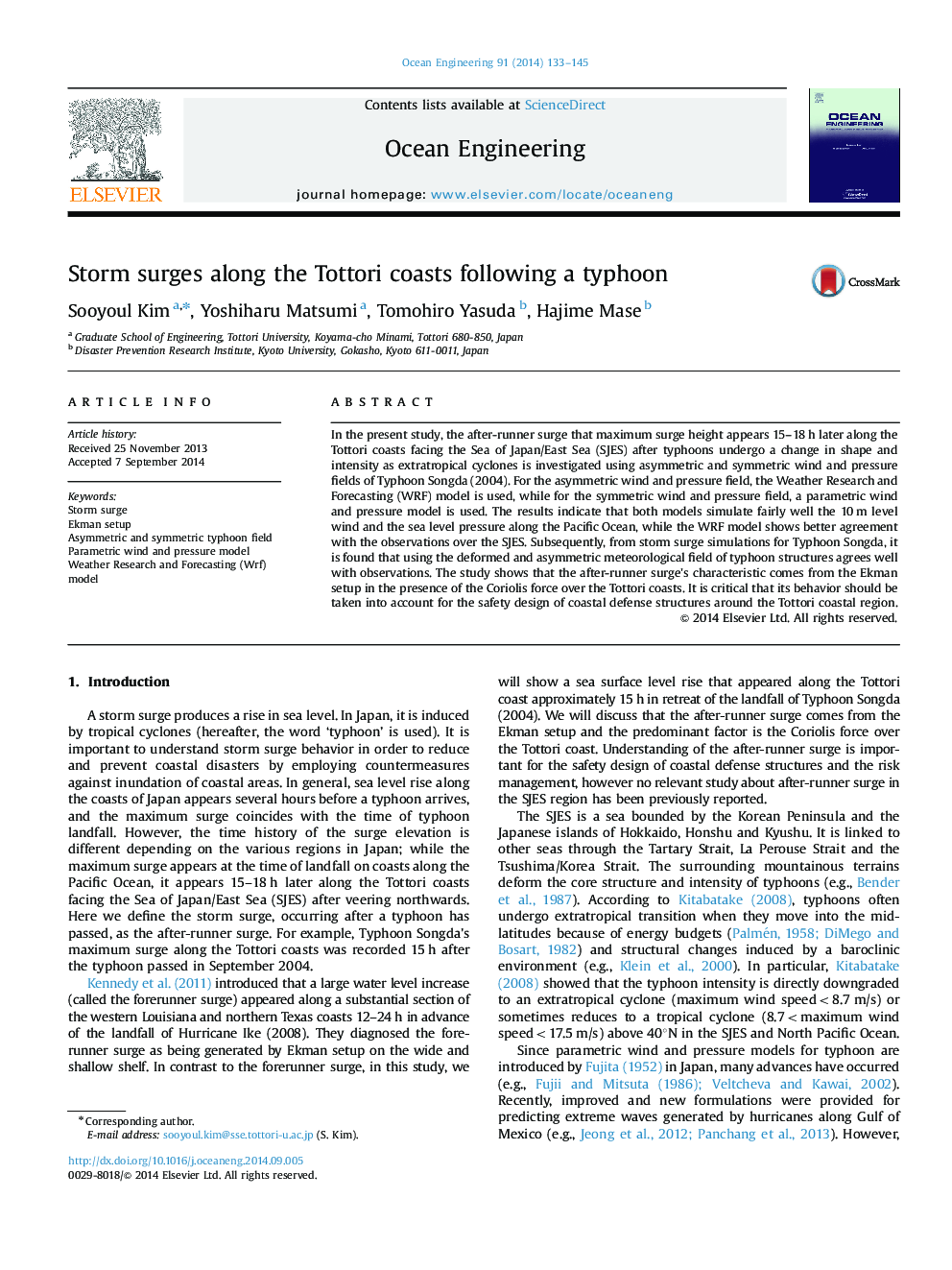| Article ID | Journal | Published Year | Pages | File Type |
|---|---|---|---|---|
| 8066079 | Ocean Engineering | 2014 | 13 Pages |
Abstract
In the present study, the after-runner surge that maximum surge height appears 15-18 h later along the Tottori coasts facing the Sea of Japan/East Sea (SJES) after typhoons undergo a change in shape and intensity as extratropical cyclones is investigated using asymmetric and symmetric wind and pressure fields of Typhoon Songda (2004). For the asymmetric wind and pressure field, the Weather Research and Forecasting (WRF) model is used, while for the symmetric wind and pressure field, a parametric wind and pressure model is used. The results indicate that both models simulate fairly well the 10 m level wind and the sea level pressure along the Pacific Ocean, while the WRF model shows better agreement with the observations over the SJES. Subsequently, from storm surge simulations for Typhoon Songda, it is found that using the deformed and asymmetric meteorological field of typhoon structures agrees well with observations. The study shows that the after-runner surge׳s characteristic comes from the Ekman setup in the presence of the Coriolis force over the Tottori coasts. It is critical that its behavior should be taken into account for the safety design of coastal defense structures around the Tottori coastal region.
Related Topics
Physical Sciences and Engineering
Engineering
Ocean Engineering
Authors
Sooyoul Kim, Yoshiharu Matsumi, Tomohiro Yasuda, Hajime Mase,
